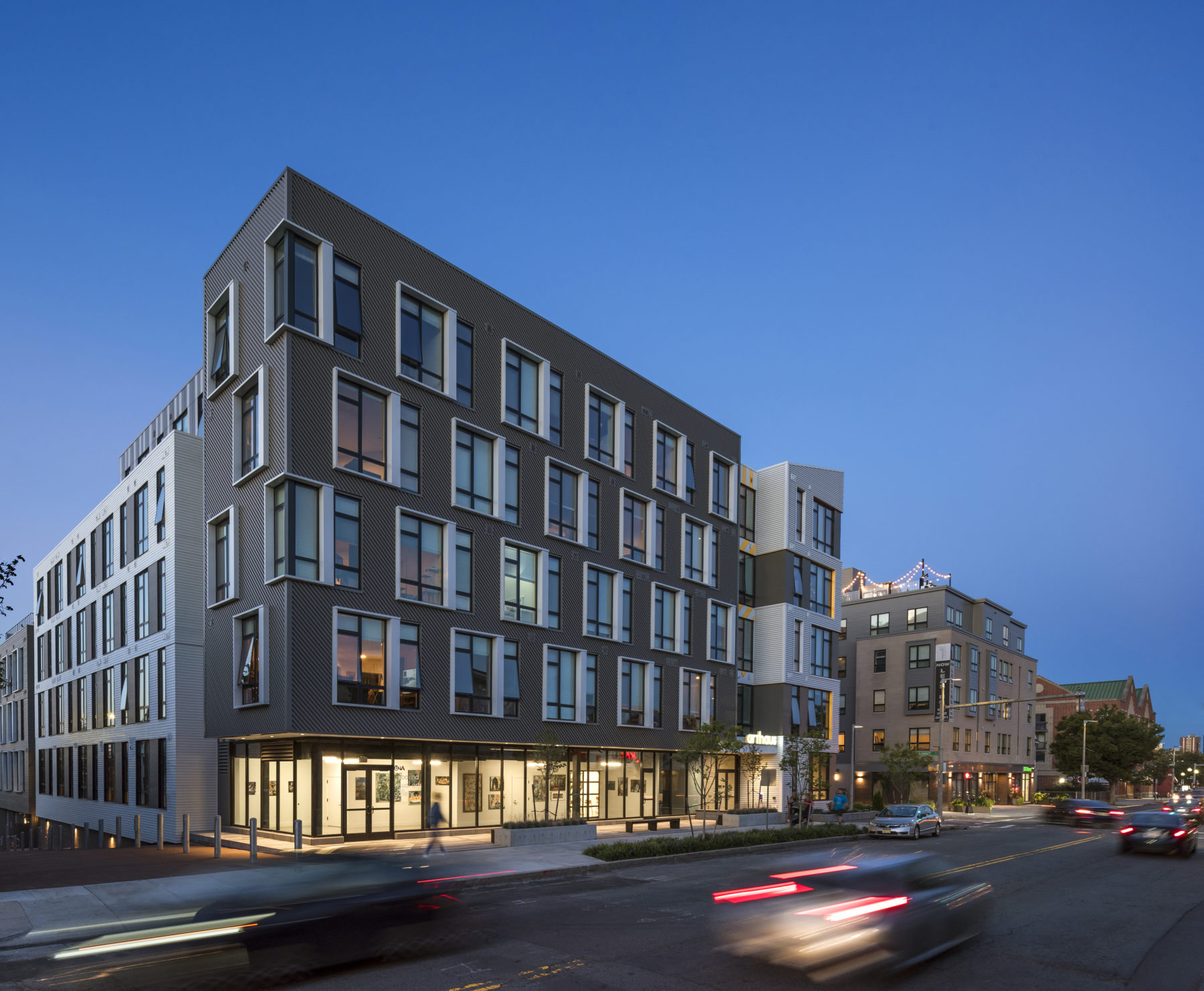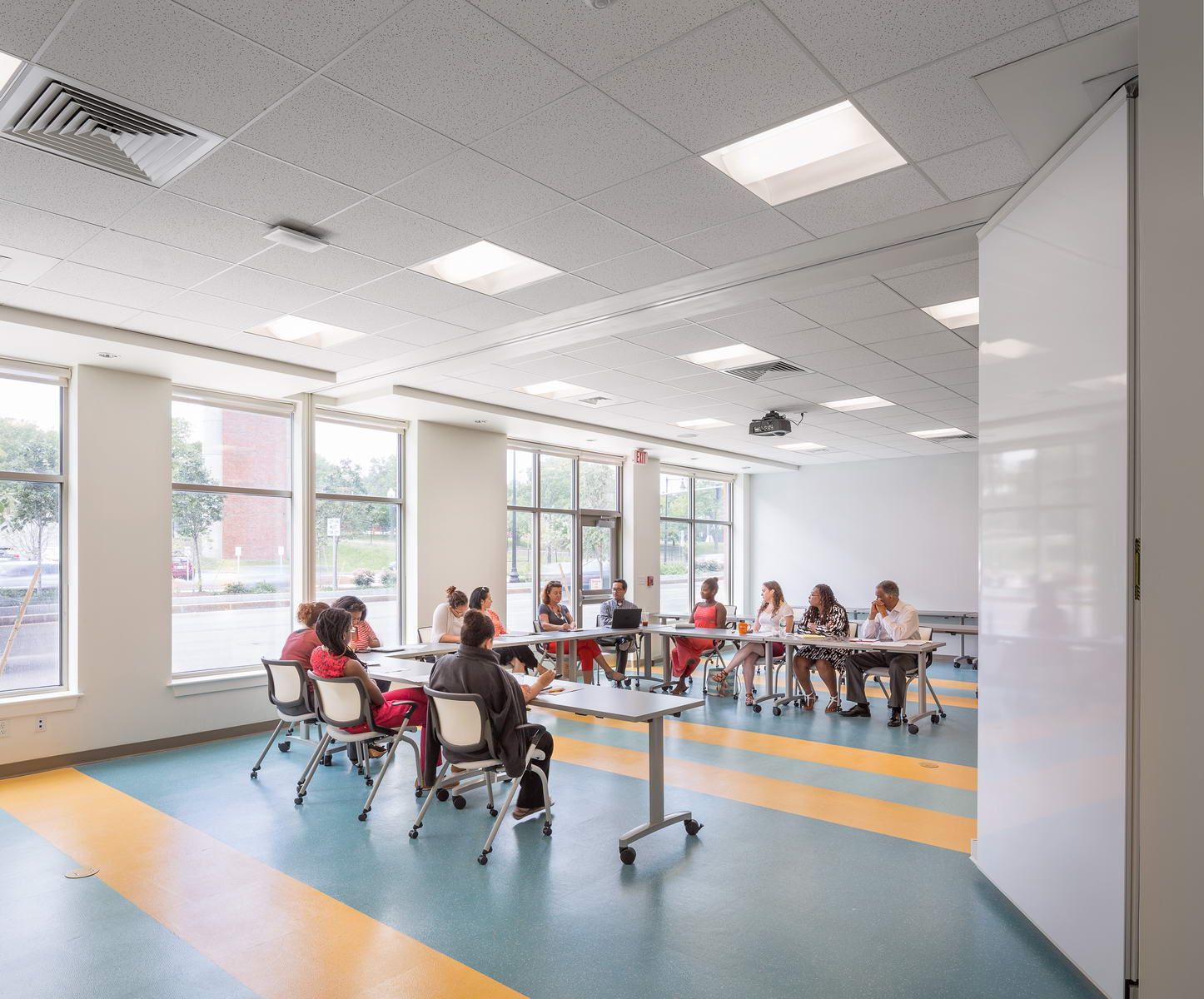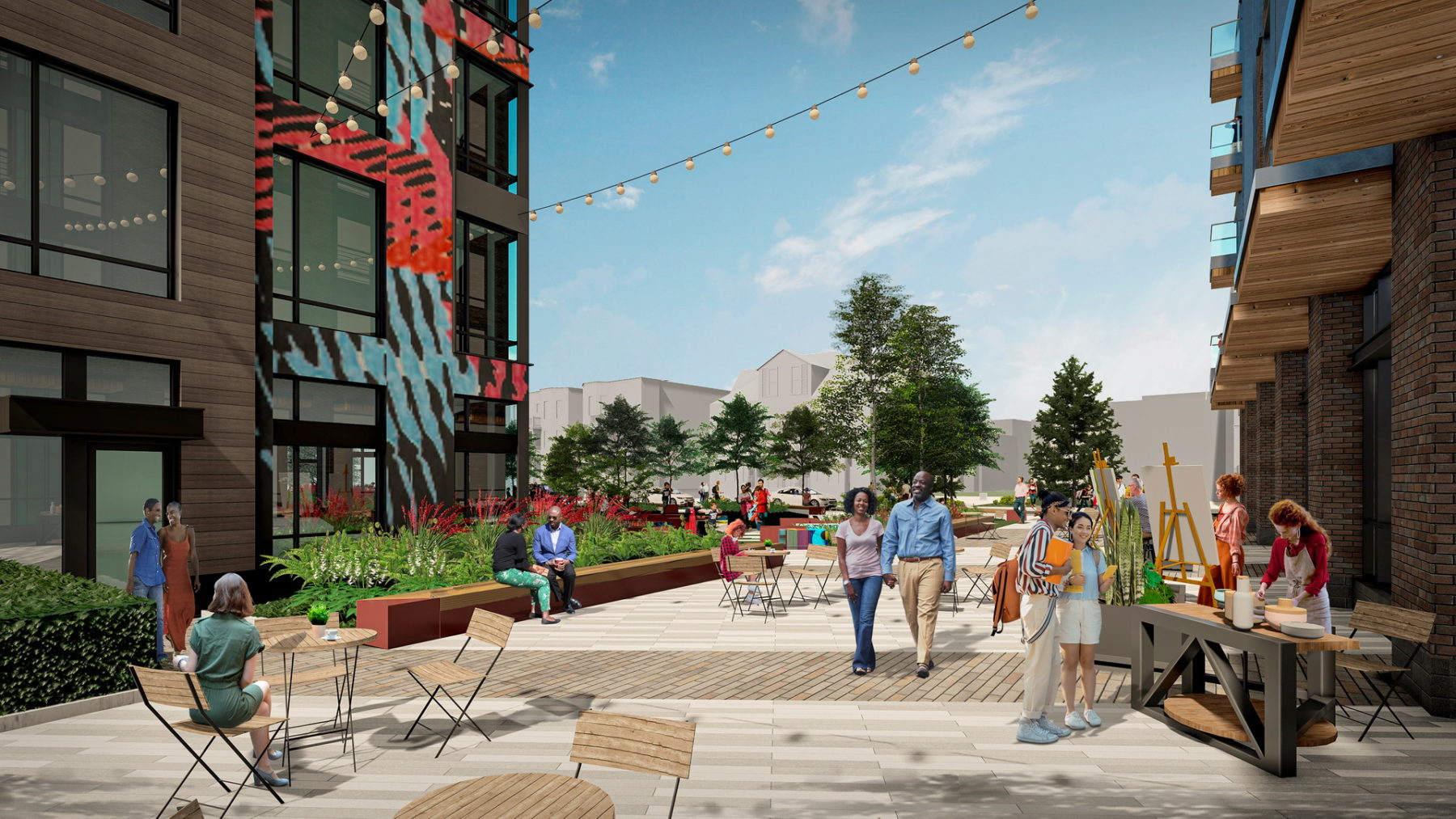You can see the empty street-level spaces in any neighborhood with newer multifamily and mixed-use properties. Unoccupied storefronts and expansive lobbies remain lifeless for months or years after occupancy.
The original idea: activating the street level of residential buildings with retail, restaurant, or office users – frequently executed in response to city requirements – proved hard to fulfill. Yet leaving these spaces vacant creates an aesthetic, community, and financial drag on these otherwise successful buildings. It’s time to change the status quo.
In our work planning and designing commercial real estate projects, we see how developers and property managers are seeking alternative and creative uses at street level. In our view, the most promising ideas center on finding a local arts, education, or cultural organization as a tenant and partner.
Benefits Extend to All
For these nonprofits, access to well-located, visible spaces will help them to expand their reach and programming, and to solve a seemingly endless struggle to find adequate places for their gallery, studio, rehearsal, teaching, and community needs.
For property owners, the benefits include a greater level of community engagement, civic visibility, and support for the fabric of the communities they belong in. Arts and cultural uses also provide a lively, safe, and heartwarming addition to not only the building, but to the extended community.
The new activity – whether a gallery showcasing the work of local artists or a studio for making local crafts, is appealing to tenants and neighbors. When aligned with the character of the local community, the spaces provide a welcome burst of creative energy and cultural support.


